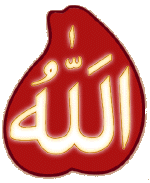On this mound once stood the house of the 4th Imam
[a] in Makkah. He was here when he got the news that Mukhtar had
killed Hurmala. That was the first time he smiled after Karbala.
Behind this is the house where the Prophet [s] was born This whole
area was generally known as "Mahal-e-Banu Hashim". It
is now called "Suq al-Layl"
|
Cemetery of Jannat al-Mualla in Makkah before it was
demolished by King al-Saud
|
Entrance to Maqbarah al-Mualla also known as "Jannat
al-Mualla"
|
Inside Jannat al-Mualla. Behind the white wall where
you see people standing is where the Prophet's [s] family members
are buried i.e. Abu Talib [a], Abdul Muttalib [a], Sayyida Khadija
[a], etc. Looking through the grilled windows on the wall, one can
see a white rectangle on the ground (partially visible in the 2nd
pic). This is the grave of Ummul Mu'mineen Sayyida Khadija [a],
the wife of the Prophet [s] and mother of Sayyida Fatima az-Zahra
[a]
|
Jabal Abu Qubays. The building facing Masjid al-Haram
that you see here is the palace of the King of Saudi Arabia. Before,
this was the Mount of Abu Qubays. After building the Ka'aba, Nabi
Ibrahim [a] stood on this mountain and called mankind to come and
worship Allah. When the Holy Prophet [s] first started preaching
Islam publicly, he stood on Jabal Abu Qubays and called mankind
to submit to Allah. The Prophet's [s] miracle of splitting the moon
was also see at the top of this mountain. At the top was a small
mosque - Masjid Bilal - and until recently people used to climb
to the top for ziyarat. As this was a security threat after the
palace was built, the govt. demolished the mosque. Notice also that
the gate of Masjid al-Haram facing the palace has only one minaret
(instead of 2) because it was blocking the King's view of the Ka'aba
from his bedroom.
|
Jannat al-Mualla after demolition. The Prophet's [s]
ancestors, Sayyida Khadija, Abu Talib and many other pious personalities
are buried here |
|
Jabal ar-Rahmah (Mount of Mercy) at Arafat
|
Jabal ar-Rahmah (Mount of Mercy) at Arafat
|
Mina. Stoning one of the three devils (jamaraat)
- part of Hajj rituals
|



